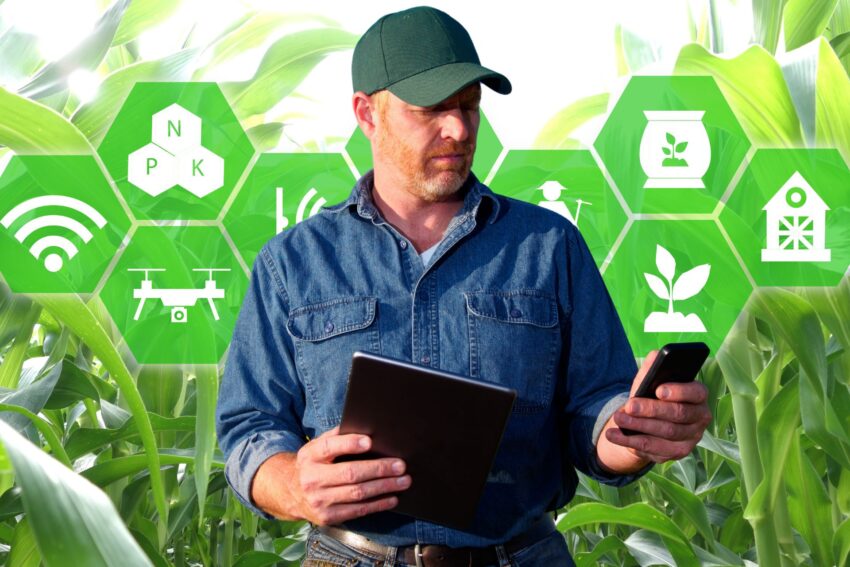What Is Precision Agriculture?
Precision agriculture (PA) is a farming approach that uses technology to optimize crop production and resource use on a field-by-field, or even plant-by-plant, basis. Think of it as farming with a magnifying glass: instead of treating an entire field the same way, PA leverages tools like GPS, sensors, drones, and data analytics to tailor decisions about planting, fertilizing, watering, and harvesting. The goal? Maximize yield, minimize waste, and make every dollar count.
It’s not about futuristic gadgets for the sake of coolness—it’s about giving farmers hard data to work smarter, not harder. Whether it’s a soil moisture sensor telling you exactly where to irrigate or a drone spotting a pest problem before it spreads, PA is grounded in practicality.
How Can It Be Applied?
Precision agriculture isn’t a one-size-fits-all deal; it’s a toolbox farmers can dip into based on their needs. Here’s how it plays out in the field:
- Variable Rate Technology (VRT): Imagine applying fertilizer or pesticides only where they’re needed, not blanket-spraying the whole farm. VRT uses maps generated from soil tests or satellite imagery to adjust application rates on the go. A farmer might save 20% on inputs by skipping over healthy zones.
- GPS-Guided Equipment: Tractors and planters with GPS can follow precise paths, reducing overlap and wasted seed or fuel. Autosteer systems mean you’re not burning gas on redundant passes—some farmers report fuel savings of 10-15%.
- Drones and Sensors: Drones can scout fields in hours, not days, pinpointing trouble spots like nutrient deficiencies or weed patches. Soil sensors provide real-time data on moisture levels, so you’re not overwatering (or underwatering) and wasting resources.
- Yield Monitoring: Combines equipped with yield monitors track how much each section of a field produces. Over time, this data shows which areas are goldmines and which are duds, letting farmers tweak their strategies.
- Data Management Software: All this tech spits out numbers—lots of them. Software crunches it into actionable insights, like “Plant more corn here next year” or “Cut back on nitrogen there.” It’s like having a business analyst for your fields.
A practical example: A Midwest corn farmer uses VRT to apply fertilizer based on soil tests, drones to spot early pest issues, and yield maps to adjust next year’s seed rates. The result? Higher yields with less waste—and a fatter wallet.
Cost-Benefit Analysis: What’s the Bottom Line?
Let’s talk money. Implementing precision agriculture isn’t free, but it’s not about charity—it’s an investment. Here’s a breakdown for a typical 500-acre grain farm considering a moderate PA setup.
Costs
Upfront Investment:
- GPS-enabled tractor upgrade: $10,000-$20,000 (one-time, assuming existing equipment).
- Drone with basic imaging: $1,000-$5,000.
- Soil sensors (20 units at $200 each): $4,000.
- Software subscription (e.g., FarmLogs or John Deere Ops Center): $500-$1,500/year.
- Total initial cost: $15,500-$30,500.
Ongoing Costs:
- Maintenance (sensors, drones): $500-$1,000/year.
- Software/data fees: $500-$1,500/year.
- Training (learning curve for staff): $1,000-$2,000 (first year).
- Total annual cost: $2,000-$4,500.
Benefits
Input Savings:
- Fertilizer: 10-20% reduction ($5,000-$10,000/year on a $50,000 budget).
- Pesticides: 15% reduction ($1,500-$3,000/year on a $10,000 budget).
- Water: 20% less usage ($2,000-$4,000/year if irrigating 200 acres).
- Fuel: 10% savings ($1,000-$2,000/year on a $10,000 budget).
- Total savings: $9,500-$19,000/year.
Yield Gains:
- 5-10% increase in crop yield (e.g., 10 extra bushels/acre of corn at $5/bushel = $25,000/year on 500 acres).
- Total revenue boost: $12,500-$25,000/year.
- Combined Annual Benefit: $22,000-$44,000.
Payback Period
Initial investment ($15,500-$30,500) divided by net annual gain ($18,000-$40,000 after ongoing costs) = 0.5-1.5 years.
After payback, it’s pure profit: $18,000-$40,000/year added to the bottom line.
Risks
- Tech fails or data misleads: A bad sensor could cost you a season’s yield in one patch.
- Learning curve: If you or your team can’t figure it out, benefits shrink.
- Scale matters: Smaller farms (under 200 acres) might see slimmer returns unless costs are shared (e.g., co-op drone use).
The Takeaway
Precision agriculture isn’t about saving the planet—it’s about saving your bank account. For a mid-sized farmer, the numbers suggest a break-even point in under two years, followed by annual gains that could buy a new truck or pay off debt faster. It’s not without risks, and the upfront hit stings, but the payoff comes in lower costs and higher yields. If you’re tired of guessing where to spend your money, PA hands you the map. For farmers who crunch the numbers and play it smart, it’s less a leap of faith and more a calculated step to a better bottom line.


